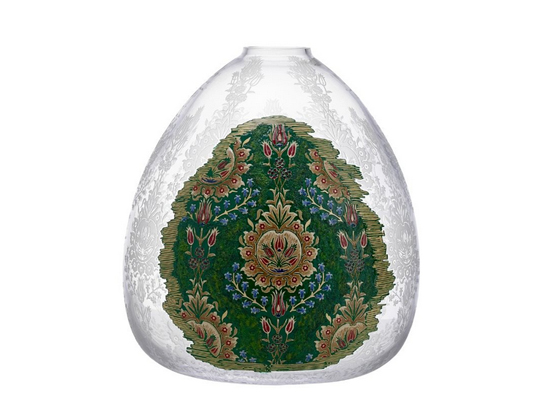
Ottoman artisanship of textile weaving, before yielding its own qualified products, had first become the heir to the art of weaving as a natural outcome of its geographical location, and has played an important role in the political, economic, social and commercial life of the Ottoman Empire. Major influences in Ottoman Weaving Art come from the weavings of Anatolian Seljuks and Principalities periods. The application of the drawn patterns could have been realized only with the masterful and consummate artisanship of the skilled weavers. In fact, according to the Ehl-i Hiref registry (the registry of diverse imperial societies of artists and craftsmen collectively called the Ehl-i Hiref-Community of the Talented) in the Ottoman archives, the most crowded among the guild organizations of the period were weavers, and they formed such guilds as “kadifeci - velvet makers”, kemhacı - velour makers” and “futacı - silken loincloth makers”. In the Ottoman weaving art, Seljuk motifs were used from the 15th century to the 20th century, and numerous compositions were created with flowers stylized with Far Eastern origin techniques called lotus (floral stylization with two simple petals, one crown petal and a stem), palmette (drawing its inspiration from palm trees, stylized floral patterns with petals sagging downwards and a bulbous middle) and hatayi (overly stylized patterns, almost geometrical, usually woven with gold and silver threads, where petals of the patterns twist inwards). Although woven works are easily worn away compared to other artifacts due to their structure and technicalcharacteristics, detailed information about Ottoman fabrics still can be obtained from the 15th century onwards.
Information about fabric and woven patterns comes from various sources, such as miniatures and carefully stored, well-kept clothes of Ottoman sultans. An important collection of Turkish fabrics and velvets is exhibited in the Topkapi Palace Museum in Istanbul. In addition, Konya Mevlana Museum, London Victoria Albert Museum, Edinburgh Royal Scotch Museum, Paris Louvre Museum also has fabric collections from the Ottoman period. On the Hyacinth Woven Vase, patterns of multi-leaf tulips, hyacinth and pomegranate were created, drawing its inspiration from a fabric dated from the 16th century from the Ottoman period at the Davids Samling Museum in Copenhagen Denmark. Hyacinth Woven Vase is produced from handmade glass and all relief patterns are decorated with gold gilt, enamel and antiquated paints as well as actual fabric. The production of the Hyacinth Woven Vase is limited to 2000 pieces.
© 2020 All Rights Reserved - Yıldız Ada